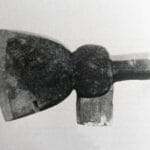A Ghastly Glimpse: Examining the Scarcity of Jack the Ripper Crime Scene Photos
Lost in the hazy, gaslit streets of Victorian London, Jack the Ripper’s reign of terror continues to fascinate and frighten. While the gruesome nature of his crimes captivated the public imagination, the era’s limited photographic technology has left us with a perplexing scarcity of visual evidence. The few existing images, shrouded in controversy and debate, offer tantalizing glimpses into the Ripper’s world and the challenges faced by investigators in 1888.
The Jack the Ripper Photo Archive, while far from comprehensive, serves as a critical resource, piecing together fragmented visuals from various sources. Instead of offering a definitive view of the crime scenes themselves (which are largely absent), these images illuminate the context of the crimes, showcasing the neighborhood of Whitechapel and its inhabitants.
The Elusive Evidence: Why Are There So Few Jack the Ripper Crime Scene Photos?
In an age of instant digital documentation, it’s hard to imagine a major crime without a flood of photographic evidence. Yet, in the late 19th century, photography was a nascent technology, not yet embraced as a standard tool for crime scene investigation. This absence of visual documentation has fueled over a century of speculation, myth-making, and enduring fascination with the Jack the Ripper case.
Several factors contribute to the scarcity of Ripper crime scene photos:
The Infancy of Forensic Photography: Unlike today, where crime scene photographers meticulously document every detail, the practice was virtually nonexistent in 1888. Police relied heavily on eyewitness accounts and often unreliable illustrations, leaving ample room for speculation and embellishment.
Technological Limitations: Early cameras were cumbersome and required lengthy exposure times, making them poorly suited for dimly lit alleyways and cramped spaces – the typical settings of the Ripper’s crimes.
Societal Sensitivities: The concept of photographing the deceased, particularly in graphic detail, was not widely accepted. While post-mortem photographs of individuals in more “respectable” circumstances existed, the gruesome nature of the Ripper’s murders likely deterred such documentation.
Mary Jane Kelly: The One Photo That Haunts History
The murder of Mary Jane Kelly, considered the Ripper’s most brutal act, stands as a stark exception to the lack of visual documentation. While debated by some, sources confirm the existence of photographs taken inside her room at 13 Miller’s Court. These “haunting photos,” as described on the Whitechapel Jack website, provide a chilling glimpse into the aftermath of the Ripper’s final and most frenzied attack.
They reportedly show:
- Details of Kelly’s room, illustrating the poverty and squalor of her living conditions.
- The position of her mutilated body, offering clues about the killer’s movements and methodology.
- The extent of her injuries, highlighting the brutality of the attack and furthering the public’s horror.
Despite their gruesome nature, these images were likely invaluable to investigators, providing tangible evidence in a case largely devoid of visual clues.
Beyond the Cobblestones: Piecing Together the Ripper’s World Through Images
While authentic crime scene photos are virtually nonexistent, other images offer valuable insights into the Jack the Ripper case:
“Jack the Ripper Photos” (jack-the-ripper.org): This website, while not containing crime scene images, offers a collection of photographs organized by victim, depicting the locations as they were in 1888. These images allow viewers to visualize the Whitechapel neighborhood, the streets where victims were found, and buildings relevant to the case.
Getty Images and Stock Photo Sites: Resources like Getty Images house a mixture of historical photographs and artist renditions. While historical photos of Whitechapel provide valuable context for understanding the social and economic conditions of the era, it’s crucial to distinguish these from artist interpretations, often gruesome illustrations based on often-sensationalized descriptions of the murders.
Casebook.org (Photo Archive): Curated by respected Ripper researchers John Bennett and Robert Clack, this archive primarily focuses on Mary Jane Kelly. It includes the controversial crime scene photograph and other images related to her life and death.
“Murder in Black and White” (JSTOR article): This academic article delves into the early use of photography in criminal investigations. While not specifically about Jack the Ripper, it offers valuable context for understanding the challenges and limitations faced by investigators in the late 19th century.
The Power of Absence: How the Lack of Photos Shapes the Ripper Myth
The very absence of definitive photographic evidence has, in many ways, contributed to the enduring fascination with Jack the Ripper. It’s a case where we’re left to fill in the blanks, to imagine the horrors hidden from the camera’s lens. This “blank canvas” has allowed speculation and interpretation to thrive, shaping the Ripper myth for over a century.
Without the stark reality of photographs to ground us, our minds conjure images fueled by sensationalized newspaper accounts, whispered rumors, and gothic interpretations that blend fact and fiction.
From Cobblestones to CCTV: The Evolution of Crime Solving
The Jack the Ripper case, forever frozen in a time before forensic photography was commonplace, offers a stark contrast to modern criminal investigations. Today, we live in a world saturated with visual information:
CCTV Cameras: The dimly lit alleyways of Whitechapel are now illuminated by streetlights and monitored by a network of CCTV cameras, capturing every movement and deterring potential criminals.
Advanced Forensics: Modern forensic science relies heavily on photography and video documentation. DNA analysis, blood spatter patterns, and digital imaging allow investigators to analyze crime scenes with a level of detail unimaginable in 1888.
The Digital Age: The internet and the speed of information sharing have drastically changed how crimes are investigated and perceived. The anonymity that shielded Jack the Ripper would be nearly impossible to maintain in today’s interconnected world.
Beyond the Gore: Remembering the Human Cost
Despite the gruesome fascination with the Ripper’s crimes, it’s essential to remember the human cost of his actions. While we may never have photographic evidence of the victims’ faces or the full extent of their suffering, their stories deserve to be told and remembered.
Through the limited images available—photos of Whitechapel, portraits of suspects and investigators, and the unsettling image of Mary Jane Kelly’s final resting place—we can strive to understand the social and economic conditions that made these women vulnerable, the challenges faced by investigators, and the enduring power of a mystery that continues to captivate and haunt us today.















